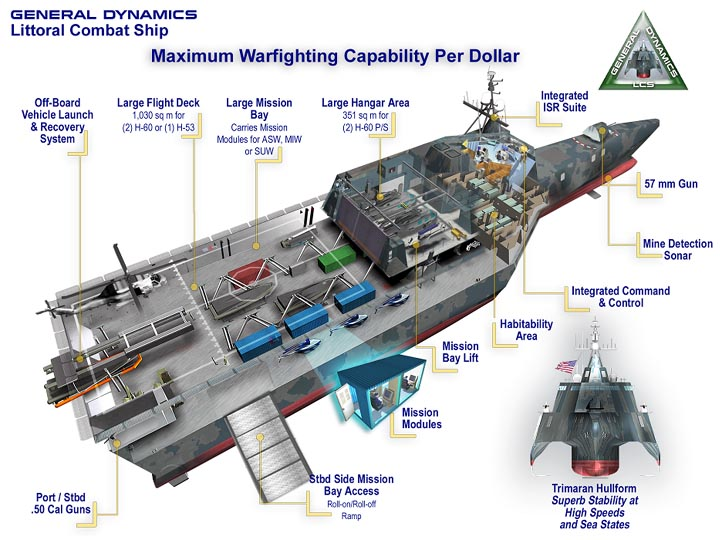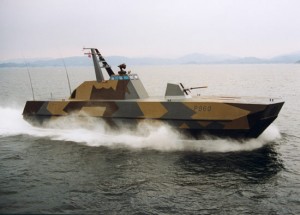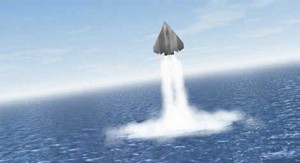How would you design the next naval vessel for your fleet?
This is the fifth in our series of posts from our Maritime Futures Project. For more information on the contributors, click here. Note: The opinions and views expressed in these posts are those of the authors alone and are presented in their personal capacity. They do not necessarily represent the views of their parent institution U.S. Department of Defense, the U.S. Navy, any other agency, or any other foreign government.

Sebastian Bruns, Fellow, Institute for Security, University of Kiel, Germany:
It looks like a very basic choice will have to be made between multi-functional platforms and increasingly specialized platforms. In other words, the decision will likely be between multi-purpose programs such as the Littoral Combat Ship (LCS) program of the U.S. Navy, and more narrowly designed warships. At this time, most navies look to be favoring the flexible approach. The early feedback from the LCS and other programs – most notably the overloading of platforms – should shed a light on the challenges and shortcomings of such an approach. It should be noted that there are some very flexible, very capable platforms that work – i.e. the Danish Absalon-class. In light of the inherent flexibility of seapower and almost all warships that buttress maritime power, a balance must be struck between flexibility without over-burdening (i.e. LCS programs), and specialization without discarding too many operational options. If further burden-sharing, political and military integration, and pooling & sharing of resources are the ways of the future, they will lead to some hard decisions. The results of such deliberations, however, must be fully embraced. This is nothing short of a monumental task.
Felix Seidler, seidlers-sicherheitspolitik.net, Germany:
I would leave things as they are. However, besides the Joint Support Ship/LHD I mentioned in answer to earlier questions, an advanced addition to our submarine force would be an interesting idea. There are plans for air independent propulsion (AIP) Class 216 subs; as quiet as the 214s, but with far more operational range and, therefore, nearly reaching a SSN’s global mission capabilities.
Dr. Robert Farley, Professor, University of Kentucky:
I think that the most pressing need is for a vessel capable of undertaking maritime maintenance missions; something akin to the current Oliver Hazard Perry (OHP) frigates. Focus for design would consequently be on endurance, flexibility, and reliability, while potentially giving up some high-end capabilities. I liked the idea for a new generation frigate that John Lehman floated during the U.S. Presidential campaign.

Bryan McGrath, Director, Delex Consulting, Studies and Analysis:
The very next naval vessel I would build would be a 50-meter Fast Patrol Vessel, heavily armed and lightly armored. It would be built in great numbers (approx. 150) and be available for foreign military sales. It would serve as “maritime boots on the ground” as a forward presence force, there to remind others of our interests and to carry out a great deal of the day-to-day business of presence and international cooperation. Again – I would build these only if Navy budgets were increased. If cuts are made, then this investment would not be made.
CDR Chris Rawley, USNR:
See my response to question 2 (small, affordable multi-purpose ships).
LT Drew Hamblen, USN:
I’d ensure submarines were able to launch unmanned aerial systems (UAS).
CDR Chuck Hill, USCG (Ret.):
Better information will not totally eliminate the need to board and search vessels. In fact it might raise more questions that can only be resolved on scene. The U.S. Coast Guard will continue to need vessels to do boardings, as will the Navy in wartime. A significant unmet requirement for the Coast Guard and possibly for some elements of the Navy is an ability to forcibly stop even the largest merchant ships. With merchant ships now up to 100 times as large as their WWII counterparts, gunfire and even ASCMs may not be effective. Torpedoes, even small ones, targeting ships propellers might satisfy this need.
To maximize their utility in war, I would like to see new cutters equipped for peacetime roles to keep down the cost of operation, but designed with the ability to be upgraded to wartime roles within a few months.
LT Scott Cheney-Peters, USNR:
First, I’d pay great attention to the concept of modularity, as demonastrated – though yet to be perfected – in the U.S. Navy’s LCS. The basic philosophy of modularity opens up a lot of opportunities for cost-effective means for keeping a seaframe technologically relevant. Second, I’d invest in a hybrid-electric drive. A powerful electric bus aboard a ship will become increasingly important if the technological hurdles of directed-energy/electric weapon systems (DEEWS) are overcome. Third, I’d figure out how to ensure the flight decks/well decks/boat decks were designed to easily launch and integrate (along with combat systems suites) with an evolving array of new drones. As with modularity, because it’s not easy to predict with hi-fidelity the exact outlines of the fleet of fifty years from now – creating a craft that’s more adaptable to the changing times is an advantage that is vital to build in. Fourth, I’d leave space to play with 3D printers. If they don’t pan out it’s room for another ship’s gym!
YN2(SW) Michael George, USN:
I would not. I honestly believe we have all the ships we need right now. Maybe more than we need, especially since Naval warfare as we know it from World Wars I & II will not be reappearing. Ships are entirely too slow and simply not as practical. Why use all the money, bodies, and logistics to send a ship to another country to attack when a missile could “simply” be shot from the U.S. to any country in the world with precision? Just my opinion.

LCDR Mark Munson, USN:
This is difficult question and my instinct is to hedge and advocate ships that meet a strategy along the lines of Zumwalt’s “High-Low Mix.” A worst-case scenario for the U.S. Navy would be a fight against China and its growing Anti-Access/Area-Denial (A2AD) capabilities, while the more likely mission is low-end maritime security options. My perfect ship for supporting the Maritime Security mission would be designed around requirements for lots of deck space (for small boats and helicopters), and command spaces for embarked staffs equipped with the necessary Command and Control and Intelligence Collection/Analysis systems.
LT Jake Bebber, USN:
Again, vessel design should match the strategic imperative. However, as a cryptologist, I’d hope for a large cryptologic space with lots of antennas!
Anonymous, USN:
I would focus on making sure that the ships that we have now are properly manned/trained/equipped before worrying about the next generation of naval vessel for the fleet.
LT Alan Tweedie, USN:
Modularize every aspect of the ship. Everything from combat systems to navigation to hotel services would be a module. If an upgrade or maintenance opportunity arises on literally any piece of equipment it could be swapped out and worked on off-ship. LCS is a step in the right direction but my model would carry the LCS mission module concept to the entire ship.
